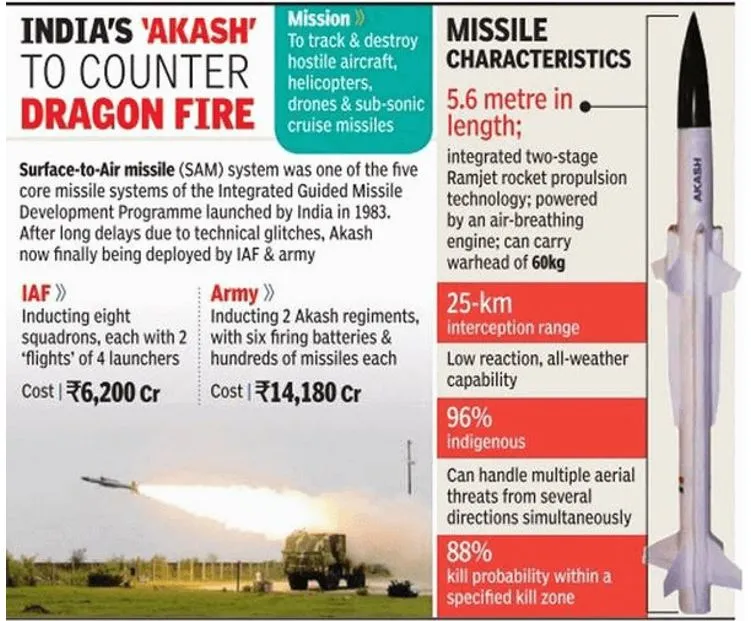

16th May 2025 (15 Topics)
Context
The Akash missile system played a key role in thwarting Pakistan’s aerial attacks during Operation Sindoor, highlighting its operational effectiveness and indigenisation success.
About Akash Missile System:
- Akash is a mobile short-to-medium-range Surface-to Air Missile system (SAM).
- It was developed as part of the Integrated Guided Missile Development Programme (IGMDP) started in the 1980s.
- Developer: DRDO, under the Integrated Guided Missile Development Programme (IGMDP).
- Users: It is currently in service with the Indian Air Force (IAF) and the Indian Army.
- Induction: IAF (2014), Army (2015).
- It is designed to provide air defence cover to the vulnerable areas and critical installations.
- The system can simultaneously engage multiple aerial targets such as enemy aircraft, missiles, and unmanned aerial vehicles (UAVs).
- Key Features of Akash:
- The missile can intercept and destroy multiple aerial targets at the same time.
- It has an operational range of around 27 to 30 km and can fly at twice the speed of sound (Mach 2.5).
- It can reach up to 18 km in altitude, making it suitable for high-flying targets.
- The system is mounted on vehicles, which means it can be quickly moved, deployed, or redeployed as needed.
- Indigenous Content: ~96%, produced by over 250 Indian industries (BEL, BDL, etc.).
Working of the Missile System
- A 3D Central Acquisition Radar first scans the sky and detects potential threats within a 120 km radius.
- The Rajendra Radar, which is the fire control radar, then tracks the threat and provides data to the command centre.
- Based on this data, the command and control centre calculates the best path to intercept the target.
- A missile is launched from a mobile launcher, which can carry three missiles.
- Once near the target, an onboard seeker helps the missile precisely strike, even if the target is moving.
- Even without a direct hit, the missile’s proximity fuse can cause damage using its 55 kg warhead, which explodes when close to the target.
New and Improved Variants:Akash Prime
Akash-NG (New Generation)
 |
More Articles

